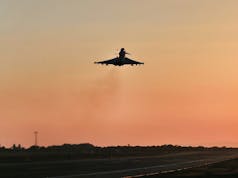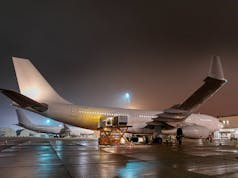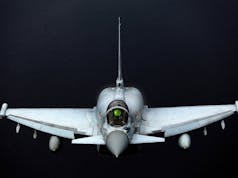As part of support sustainment activities for the United Kingdom’s F-35 initial operational capability, training aids continue to be ordered.
According to a notice of sale:
“United Technologies Corp., Pratt & Whitney Military Engines, East Hartford, Connecticut, is being awarded not-to-exceed $7,906,242 for modification P00014 to a previously awarded cost-plus-incentive, fixed-price-incentive-fee contract (N00019-15-C-0004). This modification provides for the procurement of one F-35 Lightning II low-rate initial production II short take-off vertical landing full scale engine mockup training device to support sustainment activities for the United Kingdom’s initial operational capability.
Work will be performed in East Hartford, Connecticut (95 percent); and Indianapolis, Indiana (5 percent), and is expected to be complete in May 2019. International partner funds in the amount of $3,188,587 will be obligated at the time of award, none of which will expire at the end of the current fiscal year. The Naval Air Systems Command, Patuxent River, Maryland, is the contracting activity.”
It is expected that the UK will build a front-line fleet of four F-35 squadrons with each squadron having 12 jets. A fifth unit, an operational conversion unit, will also operate 12 aircraft.
The structure of the Lightning force is now somewhat clear.
- 17(R) Squadron is currently based at Edwards Air Force Base in the US and fills role of F-35B Operational Evaluation Unit.
- 617 Squadron will be based at RAF Marham and will be the first operational British F-35 unit in 2019.
- 809 Naval Air Squadron will also be based at RAF Marham.
- 2 more unnamed frontline Squadrons are to be established.
- 207 Squadron as the Operation Conversion Squadron.
This information comes from Air Cmdr. Harvey Smyth, the commander of the U.K.’s Lightning Force, as told to reporters at a conference in London.
In 2015, the UK government’s Strategic Defence and Security Review confirmed a planned order of 138 F-35s, with 23 of them to be available for carrier duties by 2023.
The UK will have an operational fleet of around 63 aircraft which is less than half of the total number of F-35’s that the UK has agreed to purchase
However, as reported by AviationWeek, Smyth pointed out that “the total number would cover attrition replacements and the so-called sustainment fleet, which is defined as additional aircraft required to sustain the fleet to its out-of-service date as well as to cover maintenance. Other UK combat aircraft also have large sustainment fleets.”
The programme is progressing at a steady rate with the Royal Air Force recently starting in-flight refuelling clearance trials of its Voyager tanker with the F-35.













It does now seem that progress is being made all round, but a lot of these decisions are well overdue and will take years to implement.
I would really like to see the UK get into a proper schedule of fleet management where we purchase a set amount of vehicles/systems/assets every year and are more ruthless in managing our inventories.
Still it does look as if we are now getting some big pieces of the jigsaw coming through – its just madness that it all happens at once.
Well given we are being told by the Yanks we have to send the P & W F135 engines to bloody Turkey for maintenance why are we spending $7.9 Mn on something we will never be allowed to use?
A big part of me has admired all we have done on the F-35 project, believed it made sense and trusted we would be treated like near equal partners with the USA. Apparently being ‘Tier One’ matters nothing when the Politicians come to play. Italy and Turkey who combined are buying less than us and have contributed far less are now being offered key, long term, essential and more profitable work.
I mean TURKEY?????
I am now having second thoughts on this whole programme but we have really put all our STOVL eggs into this one huge basket but we ain’t raising too many chickens …